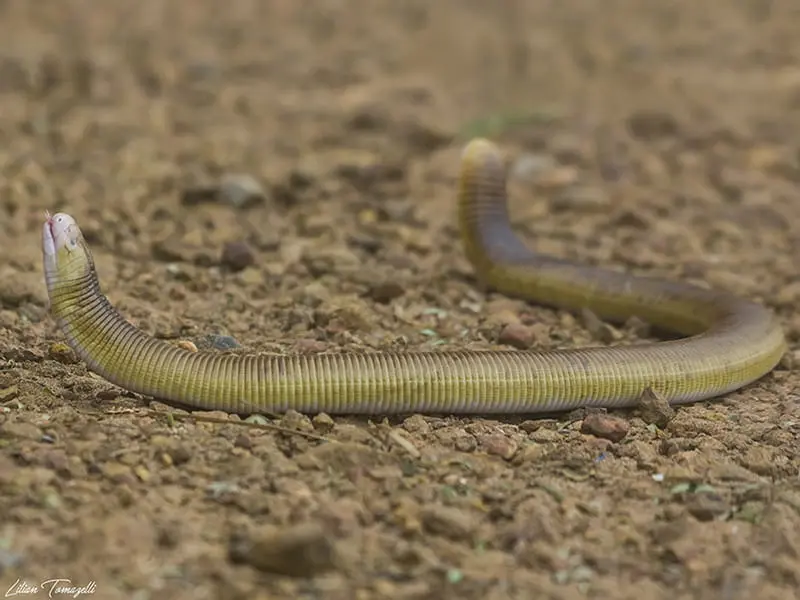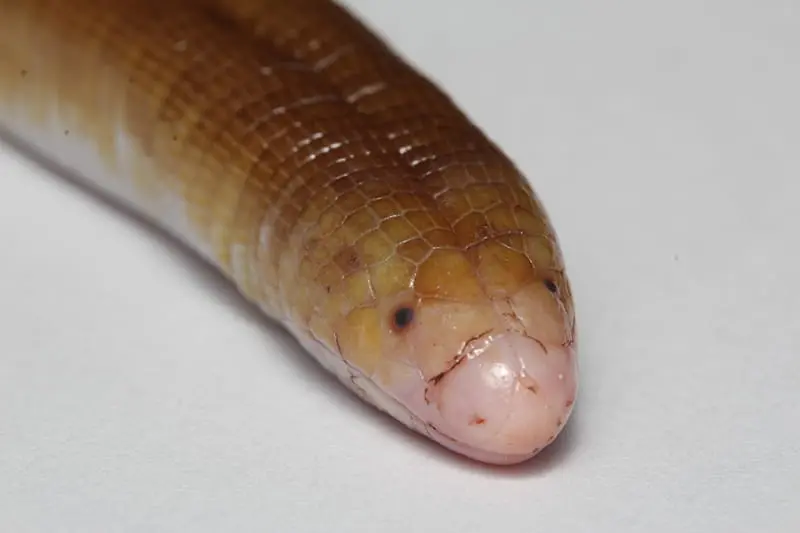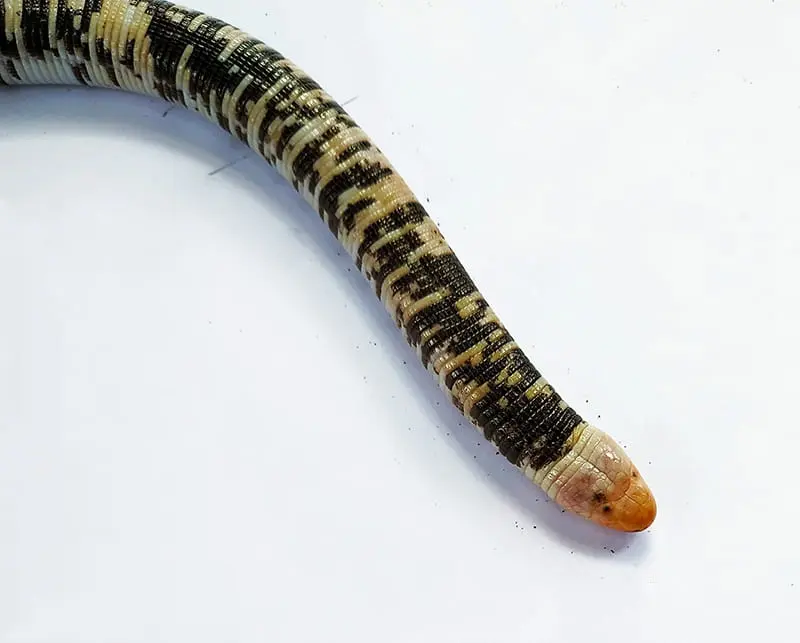Meet the amphisbaenians
According to Greek mythology, the amphisbaenian is a poisonous two-headed serpent that was born from the blood of Medusa. Sometimes depicted with wings, bird’s feet, or horns, the amphisbaenian wanders through the desert feeding on carcasses left behind. Despite being a mythological figure, there are various mentions of double-headed snakes in many places around the world, such as in Latin, European, Indian and African mythology. So many regions have created stories about the same being because, in fact, it exists.
As with many myths, that of the amphisbaenian was based on a real animal. The name “amphisbenia” means something like “walking both ways”, and refers to the ability to be able to crawl both forwards and backwards. The amphisbaenian is actually a rather unusual reptile that is usually mistaken for a snake. But, although most species are legless, the amphisbaenian is neither a snake nor a lizard; it has its own family within the class of reptiles — the “Amphisbaenidae”.
Although known as “double-headed snake” in Portuguese, the amphisbaenian does not have two heads, only a short, thick, and round tail, similar to its head. When threatened, some species raise their tails and heads at the same time so that their predators cannot tell which end is the head. This increases the chances that only the tail (which can be self-amputated) will be attacked, thus increasing the chances of survival.

TThe amphisbaenian is a fossorial animal that spends most of its time in the underground tunnels it digs with its head. The bones of its skull have undergone adaptations over the years to make them perfect for digging, and there are three head shapes among amphisbaenians. Those with round heads, live closer to the surface - like A. alba and A. fuliginosa, where the ground is softer, and they can use their hard skull like a battering ram pushing the ground.
However, the species that are considered expert diggers are usually found in deeper soils where the sand is harder. They have a shovel-shaped or keel-shaped head and move up and down (or side to side) to remove soil and create their tunnels. Because they live even more hidden and away from sunlight, they usually have little or no pigmentation, unlike the round-headed ones.
Another adaptation to their way of life is the elongation of their bodies: amphisbaenians have the left lung larger than the right (or no right lung at all). This is so that the organs fit better in their thin and long bodies. Because of this, their left lung can be divided into two parts: the first is a fully functional lung responsible for gas exchange, and the second has the function of an air pocket to help them breathe underground where oxygen is more scarce.

Contrary to their myth claims, amphisbaenians feed only on small invertebrates such as larvae and ants, and they have no venom (either in their bite or in any other part of their body). Also, only those that live closer to the surface usually bite, and their bite is considerably stronger than those that live in deeper layers - with the specialization of their skull to dig through harder soil, their jaws have been reduced, making their attacks less effective.
Because they have adapted to a fossorial lifestyle (living near the surface or not), their eyes have lost their function - they are tiny and can only distinguish changes in light intensity. On the other hand, they have a great sense of smell and hearing - they can find crawling larvae or walking ants just by sound/vibration. However, chemoreception is essential in all reptiles, and with the constant movement of its forked tongue, it can distinguish what is food, water, soil, or even a potential mate.
Although the larger species (up to 70 cm) are commonly mistaken for snakes, the smaller ones — around 10 cm, can be mistaken for worms or caecilian . Amphisbaena, however, can be distinguished from these two groups by their scales, a forked tongue, and a rectilinear crawl that resembles the movement of an accordion.

There are almost 200 species of amphisbaenians. Most are found in Africa and South America, and the rest in Central America, the Middle East, and the Mediterranean region. Brazil is the country with the greatest diversity, with 74 species recognized so far. These are animals that end up being neglected because of their fossorial habits, being difficult to find.
Despite this, it is possible to deduce that, due to their way of life, amphisbaenians have a role as important for the environment as earthworms and caecilian — favoring the penetration of water, air and the development of vegetation. Few specimens have been studied, and overcoming this obstacle is essential to helping them thrive. With human-induced environmental changes, it is possible that many species will become extinct without ever being discovered.
Read more at:
Amphisbaenia: Adaptações para o Modo de Vida Fossorial
Anfisbênias: quem são essas desconhecidas?
